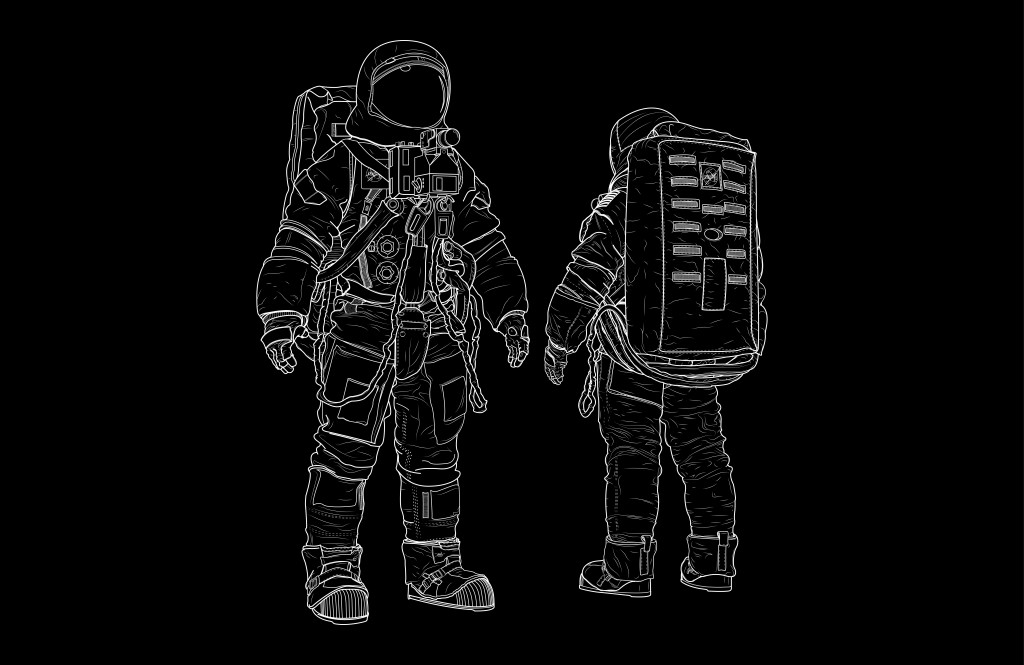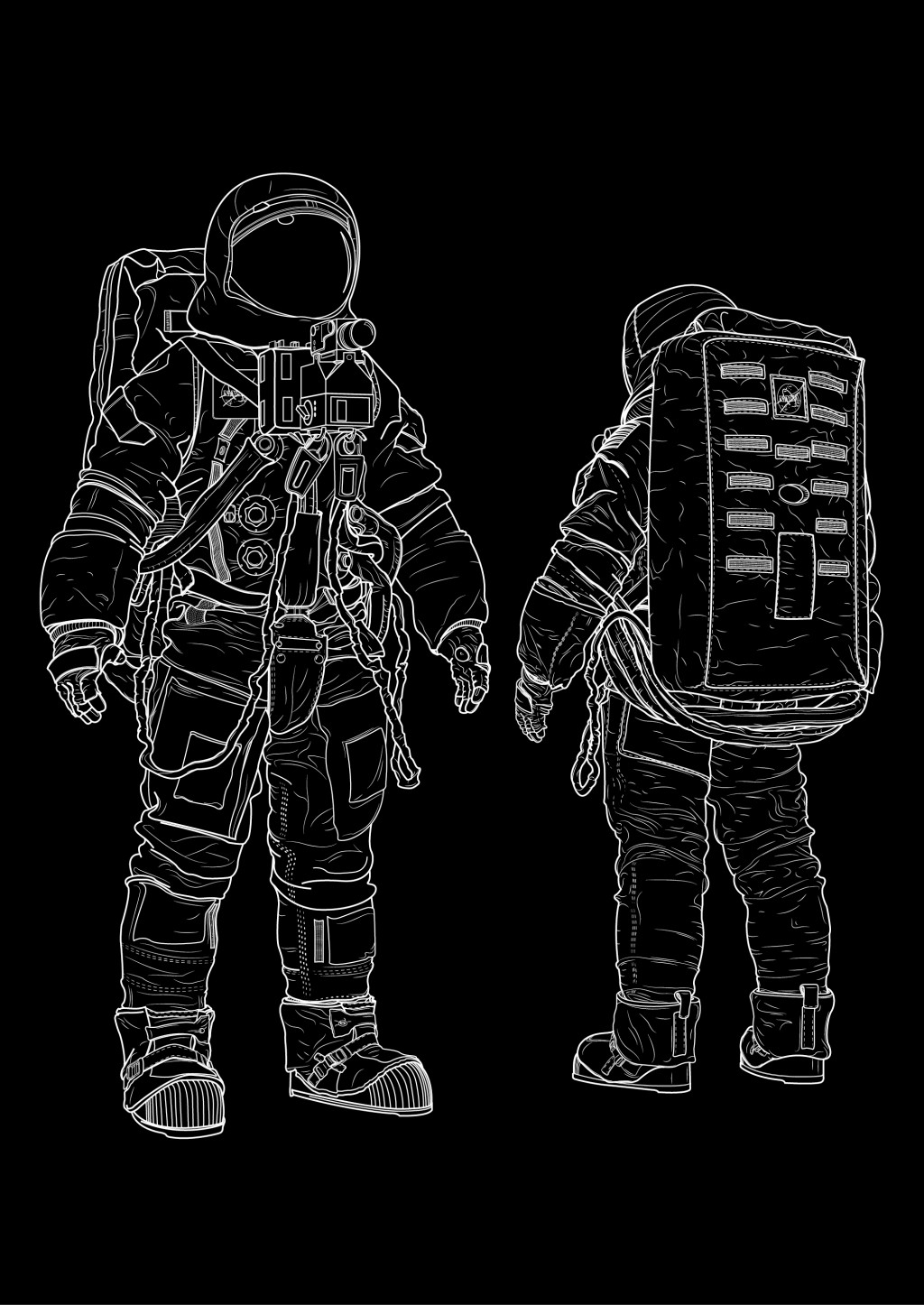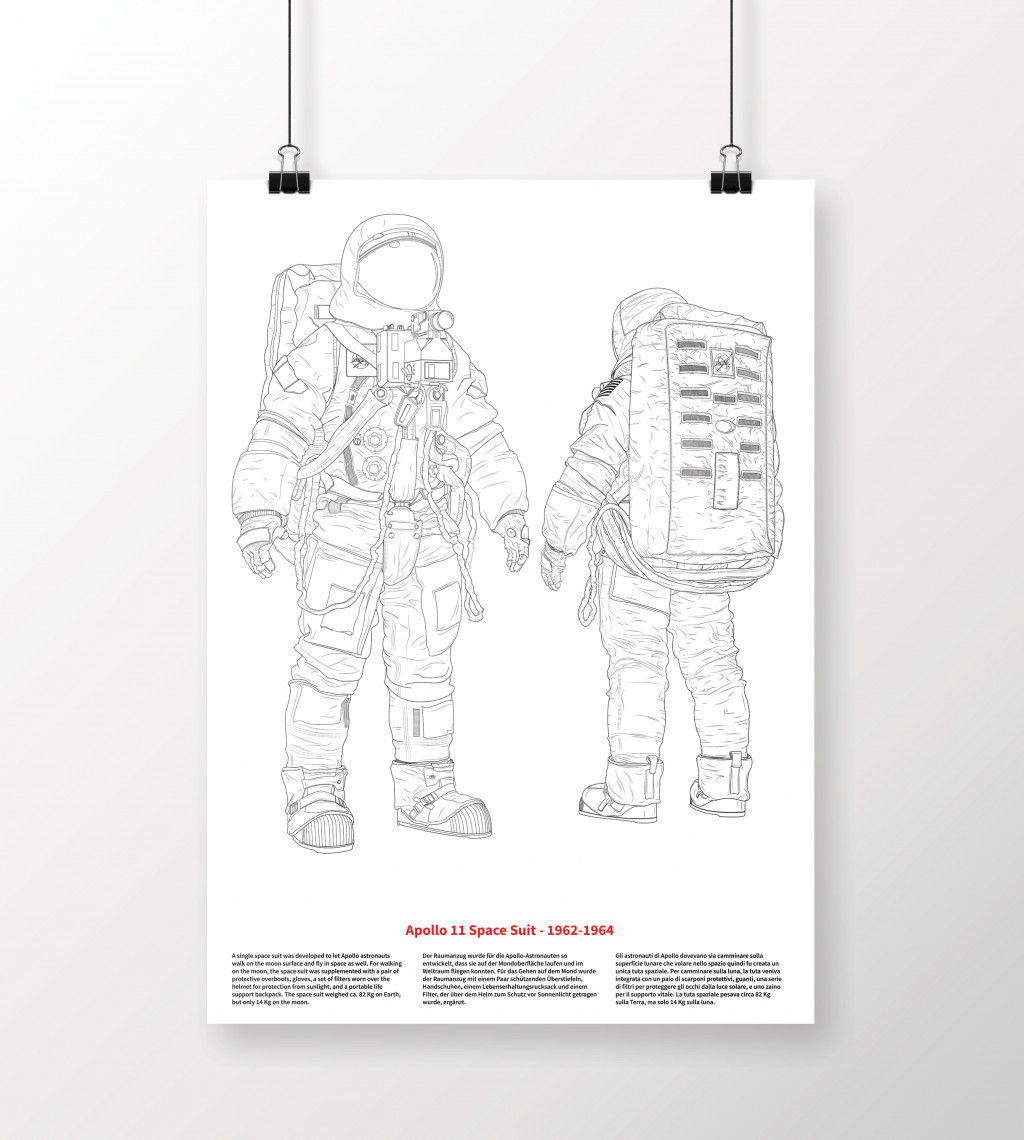Design Classic – Apollo 11 Space Suit (1962)
BA Design Warm-Up – Foundation Course
2019
semester

In 1962 NASA developed a single space suit to let Apollo astronauts walk on the moon surface and fly in space as well. For walking on the moon, the space suit was supplemented with a pair of protective overboots, gloves, a set of filters worn over the helmet for protection from sunlight, and a portable life support backpack. The space suit weighed ca. 82 Kg on Earth, but only 14 Kg on the moon.
I designed this drawing task in my first semester of study in the Bachelor Major in Design. Drawing a »Design Classic« was the first exercise (a 2-week task) which I had to do in the Foundation Design Course »Warm-UP visual communication«. For this assignment, each student had to choose a «design classic» hence an important designer company or a design object that has written itself into design history.
Students had to search in books or the internet a photo of the chosen «design classics». From the iconographic research, I should select the most meaningful photographic representation of the artifact. Afterward, the student was asked to trace in Adobe Illustrator the «design classic photo» as a precise simplified vector outline drawing. The learning goals of this exercise was the student should learn to observe and analyze the object’s form, structure, and geometry to able to simplifying and unifying the executive drawing as «analytical vector outline drawing».
I had to observe and analyze the photo of the Apollo astronauts first, to able to simplifying and unifying the executive drawings line weights. I learned how to reduce complexity: outgoing from a photo of a real-world object, making a simplified, distinctive illustration. I learned how to draw a precise executive vector artwork with medium-high complexity, using Adobe Illustrator. I learned how to draw precise Bezier curves with the «Pen Tool». I learned the difference between curve point | cusp point | corner point. I learned how to modify Bezier points and control handlers of «curve-cusp-corner» points by guided instructions and hands-on «try & error» practical experiences. I learned Adobe Illustrators’ basic and advanced vector-drawing techniques.

